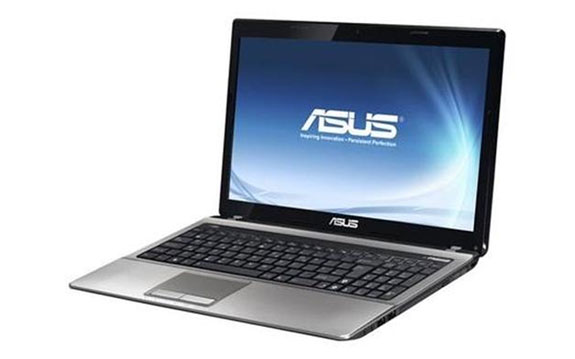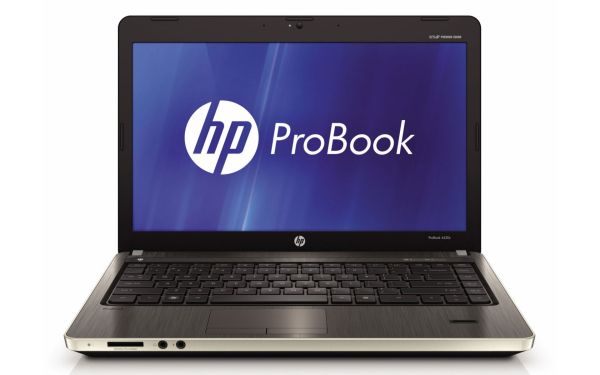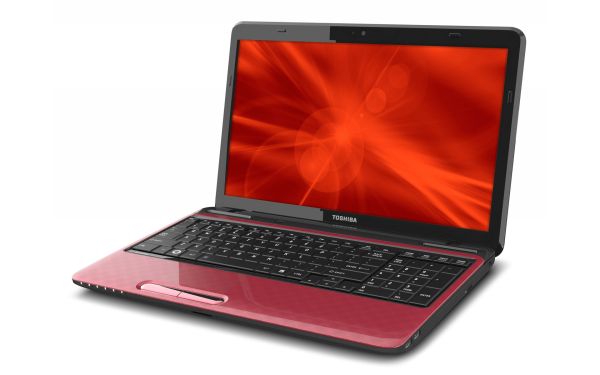Holiday 2011 Laptop Buyer’s Guide
by Jarred Walton on December 2, 2011 3:45 AM ESTBigger and Faster but Still Inexpensive: Budget Laptops
Let’s just get this out of the way: budget laptops inherently come with some compromises. I love using laptops with good quality displays, but finding a good display in a budget laptop is practically impossible. Last time I saw a decent display in something that didn’t cost over $500 (outside of tablets and smartphones), it was the ASUS Eee PC 1001P, and unfortunately a good display on an Atom-based netbook means you’re still saddled with Atom netbook performance. Outside of that one example, we haven’t tested any budget laptops in the past three years where the display was significantly better than average. Playing modern games on a budget laptop is also a stretch; AMD’s Llano (A-series) APUs may be a step up from Intel’s integrated graphics, but they still struggle to run many games at native resolution and medium quality settings. We’ll look at a budget gaming laptop below (which will cost a bit more), but the quick summary is that you have to know what you’re getting and set expectations accordingly. So just what would we recommend for around $500-$600?
Recommended Budget Laptop
Amazing what you can get for half a grand: HP ProBook 4430s for $500
Finding sub-$500 laptops is relatively easy; finding something that doesn’t have a larger-than-necessary 15.6” chassis (and still with a 1366x768 resolution) is far more difficult. I’ve mentioned in the past that 14” laptops are my personal sweet spot for mobility without compromising on other areas, and finding HP’s ProBook for $500 was a pleasant surprise. The ProBook line isn’t quite at the level of HP’s EliteBook, but you get a full-blown Sandy Bridge Core i3-2310M processor, 4GB RAM, a 320GB hard drive, and an aluminum cover, which is more than I can say for most budget laptop. The display is also a matte finish, the keyboard is a decent chiclet-style offering with the added benefit of being spill resistant. In the past it has been very difficult to find recent Intel laptops for under $600 that didn’t severely trim features—e.g. Celeron or Pentium CPUs instead of Core i3/i5, smaller batteries, no USB 3.0, etc. Intel’s HD 3000 Graphics may limit your ability to play games, but outside of that use case they’re sufficient for regular SOHO/student use. You’ll still need to uninstall a lot of bloatware on the ProBook (par for the course these days), but once you’re done with that there’s very little left to complain about.
Budget “Gaming” Laptops
If you want to keep costs down but you still would like the ability to run some games, you’ll want a bit more than Intel’s HD 3000 Graphics. AMD’s A-series APUs are one route, but we’d suggest skipping the A4 models and shoot for an A6 or A8 if you’re after graphics performance. If you want an AMD A-series APU and like me you’d prefer a 14” chassis, pickings are very slim—the one laptop that meets those requirements at Newegg is the Toshiba L745D-S4230. It’s an updated take on the L645D we reviewed earlier this year, or a smaller version of the L775D we tested in August; unfortunately, at $600 it’s a tough sell considering the overall features and performance. As much as it pains me, we’ll have to bump up to 15.6” laptops to get something with gaming potential without spending $600 or more. The good news is that by moving to a 15.6” chassis, the price drops quite a bit.
AMD’s Llano does gaming for less: Toshiba L755D for $430
Yup, we’re back at Toshiba again. Toshiba is a good way to go if you’re looking for something with an AMD processor that won’t cost too much, and for just $430 you can pick up an A6-3400M APU with 4GB RAM and a 320GB hard drive. If those specs sound familiar, it’s because other than the APU/CPU that’s exactly what you can get in the HP ProBook listed above. You’re basically trading CPU performance for GPU performance and saving $70 in the process, although the 15.6” chassis isn’t nearly so enticing in my book.
If you want some other options, the 1.4GHz quad-core CPU falls behind Intel’s i3-2310M in areas where the GPU/IGP doesn’t come into play; for that matter, even Intel’s last-gen Arrandale i5-460M (as an example) surpasses the A6-3400M in CPU related benchmarks. Elsewhere, the HD 6520G (and even the A8 series HD 6620G) still comes in behind discrete GPUs like the GeForce GT 525M and Radeon HD 6630M. So if you’d like a laptop that can handle games better and provides better CPU performance, we’re back to Intel offerings.

Budget gaming with Intel and Optimus: ASUS A53SV for $620
Scouring the Internet, we came up with two contenders for the budget gaming throne: Acer’s Aspire AS5755G-6823 for $550 and the ASUS A53SV-NH51 for $620. Both feature Intel’s i5-2430M CPU and NVIDIA’s GeForce GT 540M GPU with Optimus Technology dynamically switching between the two. They also have other similarities like using a mediocre 1366x768 resolution with a 15.6” LCD. Ultimately, it comes down to price and features, and between the two we’re going to recommend the ASUS A53SV. The main reason is that we prefer the ASUS chiclet keyboard to Acer’s floating-island keys (Dustin would use stronger language), but you also get a larger HDD and more memory as a bonus. If you don’t mind the Acer keyboard, either laptop will suffice.












88 Comments
View All Comments
aranyagag - Friday, December 2, 2011 - link
I am also holding on to my core 2 duo until it either gives up the ghost or I get a taller screenHrel - Friday, December 2, 2011 - link
Gonna have to disagree on the midrange gaming laptop.http://www.cyberpowerpc.com/system/Xplorer_X6-9300...
I have for some time, and continue to believe this is simply the best laptop per dollar you can buy right now.
JarredWalton - Saturday, December 3, 2011 - link
That's practically the same as our W150HRQ recommendation in many ways, only without Optimus and with a faster GPU. However, it's also $1200+ where we linked an ASUS G53SX going for under $1000. The Clevo P151HM is potentially faster, but having reviewed the P151HM I can say that the keyboard quality and overall build quality are nothing special. I would rather have the ASUS.Hrel - Saturday, December 3, 2011 - link
Jarred, you and everyone else at Anand are always going on about laptop screens. How can you recommend the Asus when you know the screen is bog standard? Yes it's 1080p, which helps. But viewing angles, contrast, color accuracy, all those are areas where Asus consistently and inexplicably goes with a sub-par display.Hrel - Saturday, December 3, 2011 - link
Also to clarify, from my perspective money isn't a concern as much as bang/buck is. And I care a great deal about the screen. I will say, while I'm satisfied with the quality of the speakers on the P151 Clevo, they could be louder. My only other complain though is the 10 key, the 0 needs to be moved over, if that means shrinking the arrow keys that's fine with me; then make the enter key larger or move it to the left. Build quality however and the rest of the keyboard, and tactile feedback, I find very impressive. I bought this laptop after asking you if I should get this or the MSI actually. You said Clevo or Asus, I went with the Clevo and couldn't be happier with it.JarredWalton - Saturday, December 3, 2011 - link
My understanding is the G53SX has models in both matte and glossy, and that those are all higher contrast displays. However, I can't say for sure as ASUS is clearly sourcing from multiple vendors. Right now, I only know of two matte 1080p 15.6" LCD panels, both from AU Optronics and both good quality. One is high color gamut and the other is standard sRGB, and I would be happy with either one.If you've personally seen the G53SX and it does not have a decent contrast (e.g. it has a very poor black level), let me know, but the information I was able to dig up suggests the 1080p models are better than average displays.
Hrel - Saturday, December 3, 2011 - link
Oh, also the GTX560M is the slowest GPU I'd accept. It is a shame it doesn't have Optimus, especially since it's supported. But the battery life is quite impressive, in my own uses.pepperoni - Friday, December 2, 2011 - link
Jarred - I was a little surprised by your dismissal of 3D panels on notebooks. I have never seen a 120Hz display, but I have been intrigued ever since I read this review by your colleague:"[It] was my first exposure to 120Hz refresh displays that aren’t CRTs, and the difference is about as subtle as a dump truck driving through your living room. I spent the first half hour seriously just dragging windows back and forth across the desktop - from a 120Hz display to a 60Hz, stunned at how smooth and different 120Hz was. Yeah, it’s that different." --Brian Klug 8/7/10
Your critique of mobile 3D has mainly centered on the lack of utility -- a point I completely agree with. Like you, I have zero interest in viewing any 3D games or movies on a notebook (or in my living room or in a theater, for that matter), but if 120Hz benefits the 2D experience half as much as Brian Klug claims, it sounds great.
The Toshiba A665-3DV you reviewed had crappy resolution and low contrast. I'm thinking about Dell's XPS 17 with 1080p 3D. Do you think 120Hz is a worthwhile upgrade for someone like me who hates 3D?
snuuggles - Friday, December 2, 2011 - link
I agree. I own an hn274h for 2d only, it makes a significant difference in my day to day activity and game playing. Everything just feels... Crisper? I'm not sure how to describe itOne reason they might not want to do it it power use, I'm guessing if it's running twice as fast it'll use more juice. But the truth is that there's simply no market for better displays--witness all the 13" 1360x768 60hz tn panels on supposed high end ultra books. The average consumer is idiotic.
Hey, not to put too fine a point on it, but our own jarred recommended the UTTERLY worthless ux31 based from what I can only guess is on the looks and specs. Certainly anyone who tried to use it to work would instantly find the keyboard--the single biggest differentiating factor between this and a tablet--completely unusable due to the short throw and stiff action of the keys
Sorry Jarred, you blew it big time. I'm not normally this harsh to an individual, but you need to hear this: it is unacceptable for you to recommend something based on specs alone
JarredWalton - Saturday, December 3, 2011 - link
Two things for you. First, here's the last part of my paragraph dismissing 3D: "Okay, sure, the 120Hz refresh rates would actually be nice, but does anyone want to view 3D content on a notebook?" I like the idea of 120Hz displays for non-3D purposes, but unfortunately you have to pay for all the 3D rigmarole to get there (e.g. glasses, emitter, etc.) and you generally can't get 120Hz displays unless you go with NVIDIA GPUs.Second, and this is specifically for snuuggles, I've got the UX31E sitting on my test bench right now. I can tell you the expected battery life and the performance. Given that it's an ultrabook, going outdoors into brightly lit environments is a very likely use case. A 500 nit display is going to be very useful. Would I prefer higher contrast? Of course, but at least the resolution is better than the competition. But you weren't talking about the display.... [To be continued!]